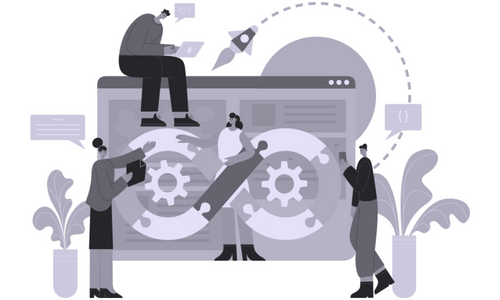The Benefits of CI CD
The CI CD process is a workflow model that requires an adjustment in developer and operations practices. This article explores the benefits of CI CD and its cultural change requirements. It starts by identifying where the current practice of software delivery is inefficient. Then, we’ll explore how to create a more effective CD process.
CI CD is a workflow model
The CI/CD workflow model helps software teams automate the process of building, testing, and deploying software. With this approach, changes are automatically deployed after they have passed tests. The CI/CD pipeline also helps teams automate infrastructure provisioning. While organizations can use the same approach for both types of deployment, some organizations choose to leverage specific aspects of
continuous delivery (CD).
The advantages of CI/CD development include faster time to market, reduced costs, and improved customer satisfaction. In addition, CI/CD development allows companies to make incremental changes that will improve the quality of the code with every update.
It is a developer’s practice
Continuous delivery (CD) is a practice of continuously shipping changes to an application, rather than waiting for the whole development process to be completed. CD is a developer’s practice, but it also benefits organizations in a variety of ways. CI/CD enables organizations to build faster and release changes to customers faster. It increases developer productivity and offers a centralized view of the entire delivery process.
CI/CD can speed the delivery of new features and bug fixes. It eliminates the need for tedious testing after a release. Instead of wasting time troubleshooting bugs, teams can use that time to build new features. Additionally, by integrating testing into the development process, bugs are avoided before they enter the pipeline.
It is an operator’s practice
The practice of CI/CD can improve software development processes and deployment. It rewards developers for shipping software quickly and operations for maintaining a reliable system. However, this practice is difficult to implement in large organizations. To make it work, you should have a good understanding of the concept and be prepared to change your workflow.
CI/CD relies on automated and reliable tests to ensure code quality. Using automated tests, you can ensure that code has passed all critical tests. When you’re using CI/CD, you won’t need to review each change manually. CI/CD can help you avoid costly mistakes and keep your team productive.
It requires a cultural change
Adopting CI/CD methodologies requires a cultural change, especially in the operations team. This new way of working focuses on close collaboration between operations and engineering, enabling rapid innovation and business value. Without this transformation, it is unlikely that clear OPEX benefits can be realized.
CI/CD can help teams ship software with quality built in. However, it requires a cultural shift in order to succeed. Organizations need to make sure that their people understand what this means.
It reduces the risk of code changes
One of the key benefits of CI/CD is that it reduces the risk of code changes and deployments. By ensuring that all code changes have been tested before they are published, the company can reduce the risk of bugs and errors. CI/CD also streamlines the development process, as it helps reduce the time developers need to spend on bug fixes and testing.
CI/CD allows developers to build high-quality code using an automated process. During the development process, they use CI tools to create a build that passes all tests and is then deployed into production. Once the build passes all tests, the code changes are automatically deployed to live systems. Moreover, the system’s design and fault isolation limits the adverse impact of any error.
It automates the delivery process
Continuous delivery (CD) aims to build automation into the software delivery process. It is a core part of the
DevOps strategy and provides developers with a pipeline to continuously deliver new features and functionality. The pipeline also involves automated tests to verify the quality, performance, and security of code. This streamlines the delivery process, which allows developers to bring new software features and improvements to users as soon as possible.
By automating the delivery process, software teams can release new features faster and receive frequent feedback from users. This way, developers can test and refine ideas faster, and can introduce fixes more frequently. This reduces the risk of introducing features that don’t add value to customers.

